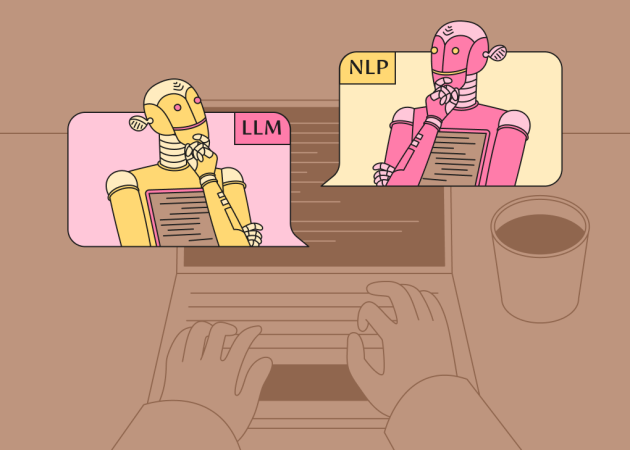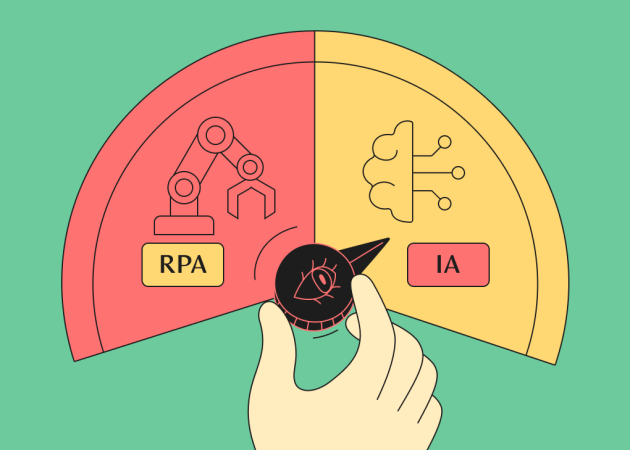
How to Integrate Remote Developers Into Your Tech Team in 2025
Contents
Contents
Bringing together remote and onsite developers can be very hard, especially when they come from different cultural and professional backgrounds. However, with the right mindset, strategies, and gradual approach, it is possible to build a cohesive and high-performing team that transcends geographical boundaries.
Companies are particularly tapping talent in tech hubs like Eastern Europe (Poland, Ukraine, Romania, Bulgaria, Serbia — all of them have growing profiles), Latin America (Brazil, Colombia, Mexico, Argentina, Costa Rica), and Asia (India, Vietnam, the Philippines) to build their remote teams. Africa’s talent market is rising in visibility in 2025, with countries like Nigeria and Kenya producing more developers and attracting remote work opportunities.
Remote work is no longer a stopgap — it’s a long-term strategy. Decision-makers are increasingly embracing distributed talent and adjusting their hiring practices accordingly to integrate remote developers. In 2024, companies invested more in international hiring, with cross-border recruitment growing by 42% compared to the previous year.
Many businesses place a special focus on Gen Z talent with their digital-native skills and a strong command of emerging technologies, a desire for purpose-driven work, and a preference for personalized career paths. These qualities align well with the flexibility and autonomy distributed teams offer.
Our experiences of working with 250+ clients and teams of different sizes and skill levels taught us valuable insights into creating a positive work environment that can lead to exceptional outcomes. So, without further ado, here are some practical strategies to keep in mind when setting up your team for success.
Invest in Onboarding
It’s no secret that a positive onboarding experience can greatly impact an employee’s decision to stay with a company: 89% of respondents admitted an effective onboarding process helped them feel engaged at work, with 18x more commitment to their new employer, compared with people who received less effective onboarding (BambooHR survey). This initial interaction with your company is crucial for acclimating new teammates to their roles and retaining the new talent. Consider following these steps to optimize the onboarding experience and lay the foundation for a successful and productive collaboration with your new team:
- Designate a primary contact person on your end who will serve as the main point of contact for the new member;
- Provide guidance and support: dedicate time in the initial weeks to familiarize them with your business domain, company culture, values, and mission. Share critical internal information, grant access to the company handbook, invite them to essential company-wide meetings, and encourage them to ask questions;
- Introduce the entire team, both onshore and nearshore, to help your new teammates relate to the company’s accomplishments, capitalizing on their initial curiosity and fostering a sense of responsibility;
- Provide day-to-day essentials and necessary information to get them up to speed. That includes clarifying their work expectations, assigning a mentor, explaining the workflow structure, and familiarizing them with any specific systems or security features;
- Set clear expectations. Engage in open dialogue with the new team member and document mutual expectations during the first month. Foster an adult-to-adult relationship built on trust and responsibility. Communicate what you expect from them, what they can expect from you, the desired technical or project progress, and their expected involvement in the product. Proactively address compensation growth and market averages to prevent job dissatisfaction from leading them to explore other opportunities.
Finally, establish robust practices for backlog and roadmap management, task assignment, and communication. Ensure streamlined processes are in place to facilitate effective collaboration and productivity.

Set Up Transparent Communication
Some teams may be more prone to miscommunication issues than others, but it always takes more time to include remote people in conversations. One way to avoid this issue is to have an open communication culture, which means utilizing group chats and public discussions rather than having backstage dialogues that leave certain team members out of the loop.
When integrating remote developers, finding a solution that deals with these “dark meetings” is essential. The best way is to encourage a culture where people recognize they are talking about work and to table that discussion until everyone is present, whether through instant messages in a group chat or a team call. Additionally, taking meeting notes and summarizing them in a knowledge base or ticket system helps ensure everyone has access to the information, regardless of whether they were present in the meeting.
When it comes to video calls, it’s important to frame them properly. Are you calling to chat or to get a specific answer? Or is it a formal meeting with an agenda and takeaways? Without proper framing, some team members may become reluctant to participate in video conferencing, leading to further communication issues.
“One of the ways to maintain an efficient and engaged team is to organize and distribute tasks in a way that requires everyone to have a solid understanding of the business, product, and codebase. It creates a collaborative environment where each team member can contribute their unique skills and perspectives to achieve shared goals from a thoughtful perspective rather than just taking tickets from the board and implementing them in the most lightweight way without truly understanding the system and how it affects the solution.”
— Andrii Iliunin, Android/Flutter Team Lead at Beetroot
Remote work can sometimes lead to communication overload or, conversely, provoke the feeling of isolation. Loneliness, overworking, and ghosting are real and reported stress factors and pitfalls of WFH. Isolation and loneliness have such a widespread impact on society that health officials already call it an epidemic.
Be mindful of burnout from too many digital channels – encourage boundaries (no-message hours, etc.) while keeping communication transparent. Also, watch out for disengagement: if a team member isn’t contributing, address it quickly with support and clear goals.
Break the Ice
Remote work relies heavily on digital technology, but it’s important to remember that this can gradually lead to emotional and psychological detachment. You can reduce the virtual distance by promoting social interaction through virtual water cooler talks, happy hours, coffee breaks (we call them “fika” in Sweden), and celebrating milestones.
When hiring a remote team or person, interview them to learn some interesting personal details and include these in your welcome message. It’s also beneficial to encourage 1-on-1 meetings with all team members to introduce the newcomers and help them connect with a team on a human level.
Platforms like Google Meet and organizing AMA (“Ask Me Anything”) sessions can boost transparency and create personal connections. Regular hangouts on non-work topics allow remote developers to share their experiences, knowledge, and passion for innovation. Short and funny icebreakers and casual talks during virtual meetings are a great way to ease awkwardness and anxieties and a low-stress way for team members to get to know each other, break down any barriers due to potential cultural differences, and create a shared sense of identity and mission.
Encouraging in-person meetups a few times a year can also foster meaningful connections. Ultimately, effective teamwork requires building relationships with real people, even in remote teams. And it simply can bring joy.
“My teams have different “rules” that help us stay engaged despite different time zones. For example, with some teams, we have regular monthly fikas at a time that works for everyone. During these fikas, we catch up, play games, and take silly but fun tests. It’s a great way to relieve stress and keep our team spirit high.”
— Iryna Kovalenko, HR+AM Specialist in Human Resources at Beetroot

Give Them the Right Tools
Having the right tools is crucial for effective teamwork and better team cohesion, whether your team is remote or in-house. Even with a fairly simple tech stack (a few core tools), you can create an integrated team environment, keep the teams connected and reduce the need for excessive meetings. It’s more about how you use tools and communicate than having every trendy app available.
Start with a basic set of collaboration tools: chat apps, video conferencing software, file sharing and cloud services, and project management applications. We recommend using a consistent set of applications across your organization to ensure everyone stays on the same page, regardless of location. And if you’re looking for specific tools, here are some examples based on different categories:
- Meeting tools: Zoom, Google Meet, Microsoft Teams;
- Project management tools: Jira (widely used for software issue tracking), Monday, Asana, Trello (for simple board management), ClickUp (task management and personal productivity), Notion (all-in-one knowledge management and project organization), Linear (developer-friendly issue tracking), ProofHub (project management and team collaboration software), and more;
- Collaboration tools: Miro (virtual whiteboards for brainstorming), Mural (interactive visual collaboration), Scribe (automatically creates how-to guides), Figma (collaborative design tool, now part of Adobe);
- Communication tools: Slack, Microsoft Teams (enterprise-focused, integrated with Office 365), Discord (community-oriented, often used in open-source projects);
- Document sharing tools: Google Drive, Dropbox, OneDrive/SharePoint (especially common with Microsoft Teams users);
- Time tracking tools: TimeDoctor, TimeCamp, Clockify (an intuitive time-tracking app popular among remote teams);
- Collaborative coding/Pair programming tools: Visual Studio Live Share, Replit Multiplayer, GitHub Codespaces (cloud-based collaborative coding environments), Codefile;
- Team building and culture tools: Crystal (offers free personality tests to learn more about your team and their preferences), Compt (provides tailored perks to your employees), PizzaTime (brings remote teams together virtually to share food), Donut (facilitates virtual coffee chats via Slack for remote team bonding), and many more;
- Payroll & compliance tools: Deel, Remote.com, Oyster (global payroll platforms for compliant international employment);
- AI productivity tools: GitHub Copilot (AI-assisted coding and development), Amazon CodeWhisperer (real-time AI coding suggestions), Notion AI (AI-powered writing assistant integrated directly into your Notion workspace).

Let Them Shine
To nurture a thriving and supportive culture for remote developers, it is vital to acknowledge their contributions and avoid making them feel left out. One of the best ways to do this is by prioritizing employee recognition, which has been proven to be a pivotal factor in boosting engagement. An online recognition platform can facilitate real-time giving and receiving of recognition, allowing all team members, including remote developers, to participate. It is also crucial to give remote employees a say using mobile social platforms and employee surveys.
Another way to make remote workers feel appreciated and valued is by soliciting and listening to feedback. Providing constructive feedback and development opportunities can also aid remote developers’ growth and make them feel included. In meetings, allocate dedicated time for these employees to talk and provide encouraging feedback when they speak. Similarly, when they email or message on team chat, listen and give micro-feedback to validate and motivate them. Finding ways to involve remote developers in important events and tasks can also help them feel like they are part of the team.
“A strong company culture that encourages interaction, participation, collaboration, and retention can positively impact team performance. When team members feel connected to the organization and its values, they are more likely to work together effectively and achieve better outcomes.”
— Dariia Holovata, Team Lead of the HR Team at Beetroot
Finally, you can also create a connection by maintaining regular 1:1s and making small gestures (like the occasional emails and check-in messages) to keep your remote developers connected to the company and let them know that you care.
In 2025, retaining remote developers is as important as ever. Many teams have shifted to outcome-based performance metrics to ensure accountability while promoting trust. Providing regular feedback, recognizing effort publicly, and keeping developers actively engaged in decision-making has become the standard for distributed team success. This approach is especially effective in preventing disengagement — a risk highlighted in recent productivity studies.
Encouraging in-person meetups a few times a year can also foster meaningful connections. Research shows that hybrid models (a mix of remote and in-person interactions) often yield better collaboration and innovation outcomes. Even quarterly off-sites can significantly strengthen team cohesion and morale.
In conclusion, integrating remote developers into your existing team can be a rocky experience. It takes time to achieve and cannot happen overnight, but with the right talent on board and a reliable development partner, you can break it down into smaller steps and tactics that pave the way for success. If you’re looking for support in navigating this journey, we’re here to help.
Subscribe to blog updates
Get the best new articles in your inbox. Get the lastest content first.
Recent articles from our magazine
Contact Us
Find out how we can help extend your tech team for sustainable growth.







